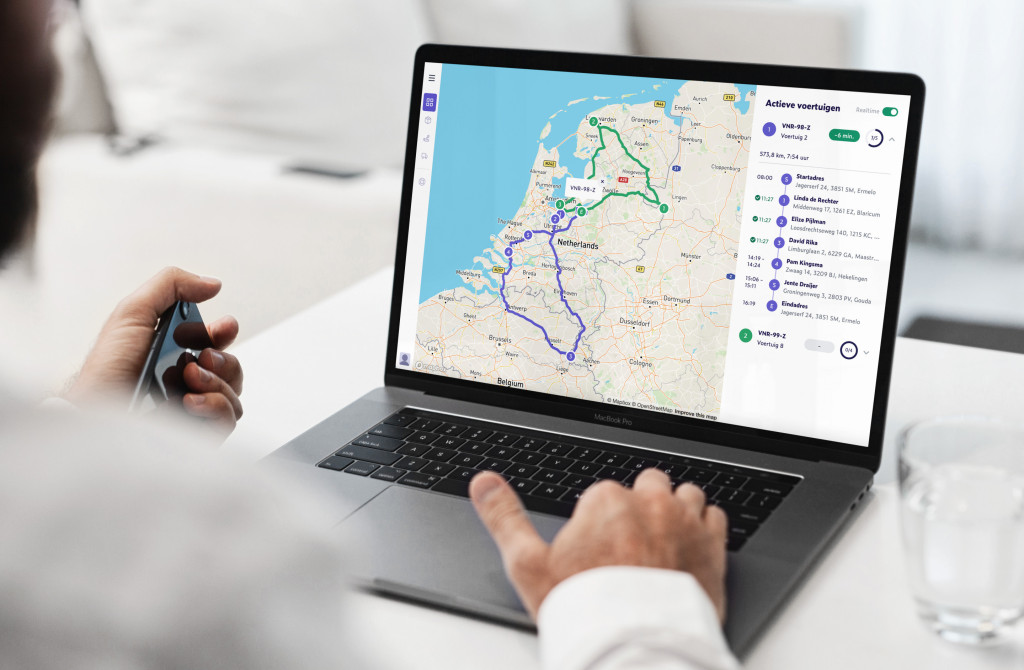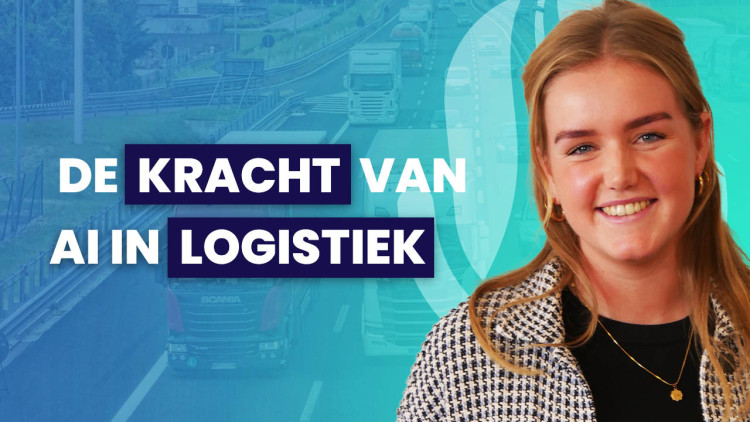How do you properly use the logistics term ATA?
What does ATA (Actual time of arrival) stand for?
ATA is the driver's actual time of arrival at the delivery point. The ATA may differ from the ETA (Estimated Time of Arival) due to traffic congestion, weather conditions or other external factors. The term ATA is often used in the transportation and logistics industry to record and plan the arrival time of goods and passengers.
Now you're thinking to yourself, why is the ATA so important?
We explain. Keeping an ETA and ATA is very important, do this for every route a driver drives. An ETA is important for planning logistics, an ATA is important to monitor the difference in time. This way you can see every day the difference between the expected arrival time and the actual arrival time. Is it common for the actual arrival time to be later than the expected arrival time? Investigate which bottlenecks affect the actual arrival time.
The difference between ETA and ATA
When a delivery driver expects to be at destination around 12:00 and deliver the package, but ends up actually arriving at destination at 13:00 due to external circumstances. Then the ETA is 12:00, and the ATA is 13:00.
Logistics Terms In Brief
The various terms are similar, but do mean something different, so here are the abbreviations and their meanings:
- ETA (estimated time of arrival): estimated time of when the driver expects to arrive at the customer's address.
- ETD (estimated time of departure): estimated time of when you expect the driver to leave the warehouse to start his route.
- ATD (actual time of departure): actual departure time of when the driver will leave the warehouse and begin his route.
- ATA (actual time of arrival): actual arrival time of when the driver arrives at the delivery point.
Technological Tools for Monitoring ATA
The accuracy and efficiency of logistics operations can be significantly improved with the help of modern technology. Advanced tracking and monitoring systems enable companies to obtain real-time data on the location and status of their deliveries. This allows them to accurately monitor the ATA (Actual Time of Arrival) and make adjustments as needed. Utilizing GPS technology and cloud-based platforms, companies and customers can stay abreast of exact arrival times and any delays.
ATA's impact on customer satisfaction.
Accurate and timely delivery is crucial to a positive customer experience. By accurately communicating the ATA, companies can improve customer satisfaction for their customers. Customers appreciate transparency and real-time updates on when to expect their order. Correct estimation of the ATA not only helps manage customer expectations, but also gives companies valuable insights to optimize their logistics processes.
Analyzing ATA data for logistics optimization.
Analyzing ATA data can provide a wealth of information for improving logistics processes. By examining the differences between the ETA (Estimated Time of Arrival) and the ATA, over a period of time, companies can identify patterns and bottlenecks that affect delivery times. This can help address operational challenges, improve loading and unloading processes, and allocate personnel and resources more effectively. Recent RouteLogic research has shown that in 98% of cases the ETA is calculated correctly. Yet in practice, the ETA deviates 2% from the ATA. Of this 2%, 1.5% is caused by drivers starting their route too early or too late. The last 0.5% are calamities that are not structural in nature. A thorough analysis of ATA data can contribute to a more efficient and customer-oriented logistics operation.
Optimize your logistics and customer communications with RouteLogic
After the in-depth analysis of the meaning and importance of ATA, it makes sense that monitoring arrival times is crucial in today's logistics industry. It brings us to RouteLogic, a cutting-edge solution that is revolutionizing how companies manage their logistics operations. RouteLogic is not just another route planning software; it is a powerful tool that bridges the gap between technological innovations and the practical needs of logistics.
With an impressive 98% accuracy, RouteLogic can predict the exact ETA, thanks to a proprietary algorithm that is unique in the market. This level of precision is not only impressive, but allows companies to provide their customers with accurate information on expected delivery times.
RouteLogic enables real-time communication of the ETA and driver location to customers via SMS and/or e-mail. In addition, customers can see exactly where the driver is on the track-and-trace page. This level of transparency and communication increases customer satisfaction and enables companies to provide service excellence. And when the ETA deviates, customers automatically see the ATA on the track-and-trace page. In fact, the ETA can be automatically updated when desired.
Integrating RouteLogic into your logistics processes represents a step forward to a more efficient, customer-centric and transparent operation. It's not just about tracking arrival times; it's about creating a reliable and predictable delivery experience for your customers. With RouteLogic, you're always one step ahead in meeting your customers' expectations and optimizing your logistics operations.



